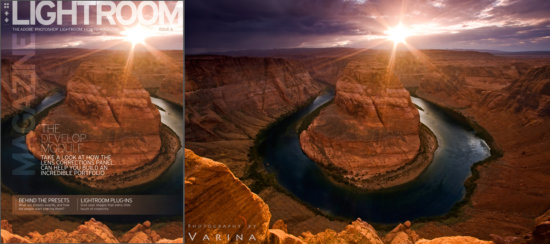How do Pro Nature Photographers use their images?
One of our readers sent me the following question: How do nature photographers choose which images to show on their website gallery and which to put on social media? How do you decide which posts to use as blog posts? Which images do you offer for sale? I guess my question is, what’s the decision-making process you use to decide which images are best for all the different things you do for your photography business?
There’s a lot to think about here – but the short answer is that I am always thinking about how I’ll use my photos – even before I release the shutter. Heck, sometimes even before I take my camera out of the bag. As I’m building an image in my mind, I am considering how it will fit into my photography business. I usually know if I have a portfolio shot almost immediately – and most of the time, I have an idea of how I can use certain images for teaching or for blog posts. Sometimes, I’m even thinking about sharing on social media when I’m working somewhere fun, or with an unusual subject.
Online Portfolio
The images in my online fine art portfolio are carefully selected for visual appeal, impact, technical accuracy, sharpness… and of course, they are the shots I love. My portfolio is exclusively nature photos – wide angle landscapes, macro and detail shots, black and white images, and a few wildlife photos.
If you visit my online portfolio, you’ll find a Search Page that allows my clients to look for images that match a specific theme. Maybe a client need a series of images from national parks to illustrate an upcoming magazine article – or an interior designer is looking for calming photographs of waterfalls for the lobby of a hospital. My portfolio allows buyers and collectors to browse all the images I am offering for sale as fine art prints.
Photos to share on Social Media
When I want to post on a photo sharing or networking site, I’ll probably choose some of my recent favorites. Something from a recent trip – so friends and fans can see what I’ve been working on – or something I was playing with recently.
I recommend that nature photographers downsize and compress images that are shared on social media and include a watermark with their name or logo. I never share high definition photos or original files on social media to limit the opportunity for online photo theft.
Nature PhotographyC ompetitions & Magazine Cover
Some of my photos are specifically suited for competitions and magazine covers. This is a whole different ball game. A technically perfect nature photo isn’t enough – if you want to enter a photo contest or get on the magazine cover, you need to choose a photo that jumps out and calls for attention.
So – how can nature photographers go about getting a magazine cover-worthy photo? Here are a few quick tips:
- Impact – Remember, the cover of a magazine is designed to help sell copies. The design and marketing departments are looking to make a splash, grab people’s attention – and most of all, make a sale. That means they’re looking for images that really pop. In this case, the burst of sun over the river bend is a real attention-grabber.
- Copy Space – But keep in mind that Magazine covers are never all about the cover photo. The image is the attention grabber – but a potential buyer probably won’t buy the magazine for the cover photo alone. Designers want to splash the titles of interesting articles across the cover – along with the title of the magazine and a tagline, the issue number and date, and maybe a few inset photos too.
- Minimize Distractions – Designing a cover that includes all that “stuff” can be pretty difficult. There’s the potential for some serious clutter – which can actually turn a buyer away. So, designers look for a photo that doesn’t include a lot of distractions. Simple compositions that are free of distracting extras work best.
- Shoot both Horizontal & Vertical compositions – In this case, the design team at Kelby Media Group decided to crop a horizontal image for the cover, but it’s usually a good idea to take both horizontal and vertical shots of a scene like this. Horizontal shots are great for calendars and web-based media. Vertical shots are best the front cover of a magazine.
When you are choosing photos to enter in competitions, impact is critically important – but so are originality and creativity. You want something that grabs the eye, and captures the attention of the judges. I like to do a little research before I offer an image for judging. Find out who the judges are, and look at their work.
Look at past contest winners and see if you notice a trend. What are the judges looking for, and can you get their attention with a special shot in your portfolio? Take your time when choosing images for competition, and ask for input from someone who can provide honest, constructive feedback. Competition images should be unique and interesting.
Teaching, Video Tutorials
I am always on the lookout for images I can use to help illustrate concepts in our video tutorials for our photography business. No matter what I’m shooting, I’m thinking about how I can help a student learn the skills I’m using in that moment. If I’m working with difficult light, I might take a series of shots to show how I use a graduated neutral density filter. If I’m working with a circular polarizer filter, I’ll take an extra shot to show the difference between a shot taken with a polarizer and without. I might even shoot a few seconds of video if I feel it will help illustrate a point for my students.
Over the years, I’ve build a huge library of these “teaching photos”. They are so useful when I’m preparing for an event or a workshop – and for blog posts, too!
Photos for Stock Agencies
I am known, primarily, as a nature photographer – so although I shoot all kinds of photos, you won’t find stock shots or portraits in my online fine art portfolio. They go directly to stock agencies – and most people who know my work don’t even know that I shoot for stock as well.
Stock photography helped get me started as a professional photographer, but I don’t shoot for stock very often anymore. My stock portfolio is very diverse – with images of people, food, concept photography, and more.
If you want to submit your nature photography images to stock agencies, consider including a human element. Many stock agencies prefer photos with people, so set up a tripod and a timer, put on a brightly colored jacket, and get into your shot – or get a friend to pose for you. If someone else is in your photos, you’ll need a model release – and be sure to check submission guidelines and follow them carefully or your images will be rejected.
Photos that don’t make the cut
I delete thousands of photos every year. In fact, I feel much more strongly about choosing the images that I don’t show than the ones I do. I think it’s important to be your own worst critic. I’d rather have a portfolio with ten really good images than a thousand mediocre ones. If a photo isn’t good enough, it wont make it to my portfolio.
So – there it is. I prepare a photo, decide if it’s worth showing to the world, and if I think it is, I get it ready to add to my portfolio or use it to create educational content for my photography business. When I feel like sharing something, I’ll grab whatever catches my eye that day – and when I want something with some extra pop, I’ll put a little more time into my selection process.
How do you decide which of your nature photography images to share with the world? Are you extremely critical of your own work? I’m always curious to know how others curate their collections. Share your thoughts!















 Grant Collier
Grant Collier


Wow.. you made that wonderfully clear in a perfectly sensible manner.
Well done! :D
*tip of the hat*
mm
Why thank you, Jordan.